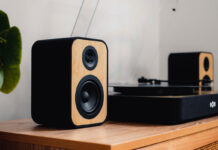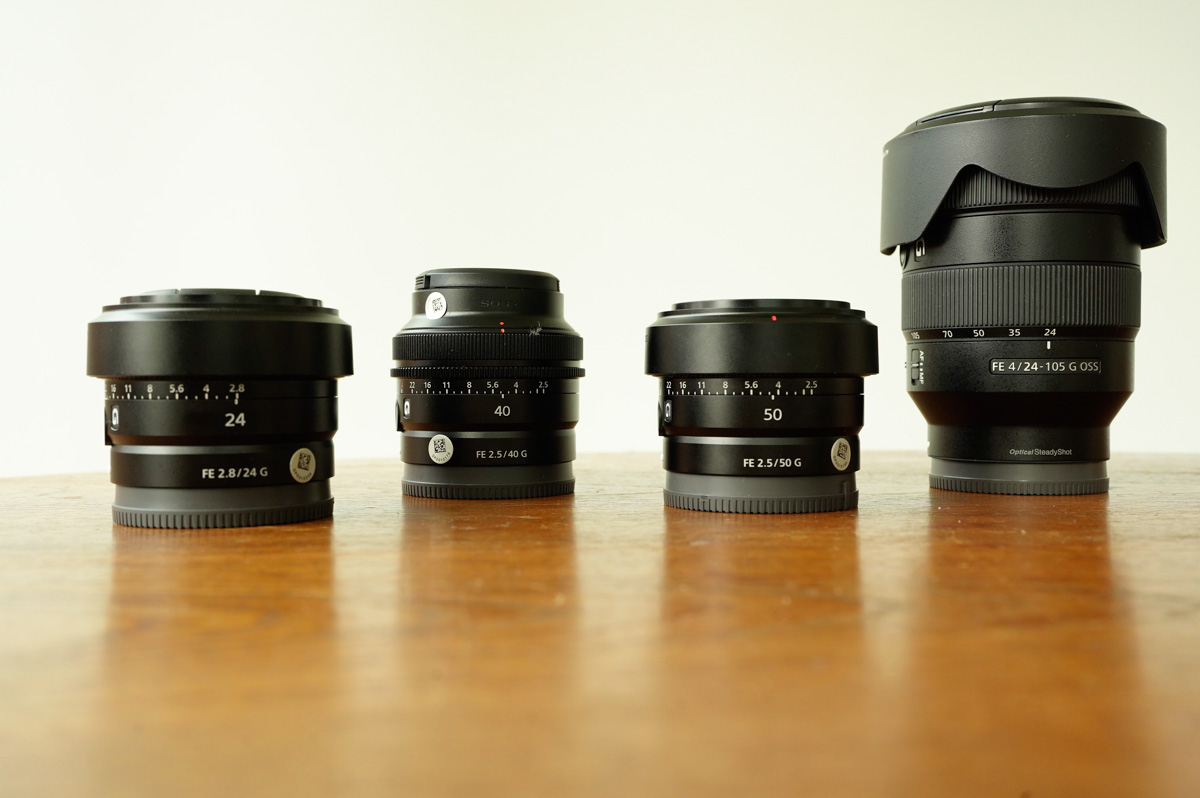
Whether you’re just starting your photography journey or looking to upgrade your gear, your lens matters just as much—if not more—than your camera body. The lens you choose can dramatically change the look and feel of your images. From wide, sweeping landscapes to tightly composed portraits with dreamy background blur, different lenses unlock unique creative possibilities. In this guide, we’ll help you understand the different types of lenses in photography, how they work, and which one might be best for your style.
It’s important to understand how camera lens types differ from each other. You’ll learn how they function, the differences between prime and zoom options, and how to match each lens type with your photography goals. We’ll also dive into compatibility tips and help you build a lens kit that supports your creative journey. Let’s take a closer look at what your next lens could be.
What is a camera lens?
A camera lens is the eye of your camera. It’s made up of one or more curved glass elements that work together to direct light onto the camera’s sensor, creating the image you see. Without a lens, your camera can’t capture anything—it’s the essential link between what you see and what your camera records.
Each lens is designed to control how light enters the camera and how it focuses. This affects not only how sharp your photo is but also how much of the scene is in focus and how your subject appears in the frame. The type of lens you use influences everything from image clarity to the mood of your photo. For example, a lens with a wide aperture (also known as a “fast lens”) can create a soft, blurred background to make a subject stand out, while a wide-angle lens lets you capture expansive scenes with dramatic perspective.
In short, lenses don’t just capture the scene—they shape how the scene appears. That’s why choosing the right lens plays a huge role in your photography’s technical and artistic quality.
The difference between prime and zoom lenses
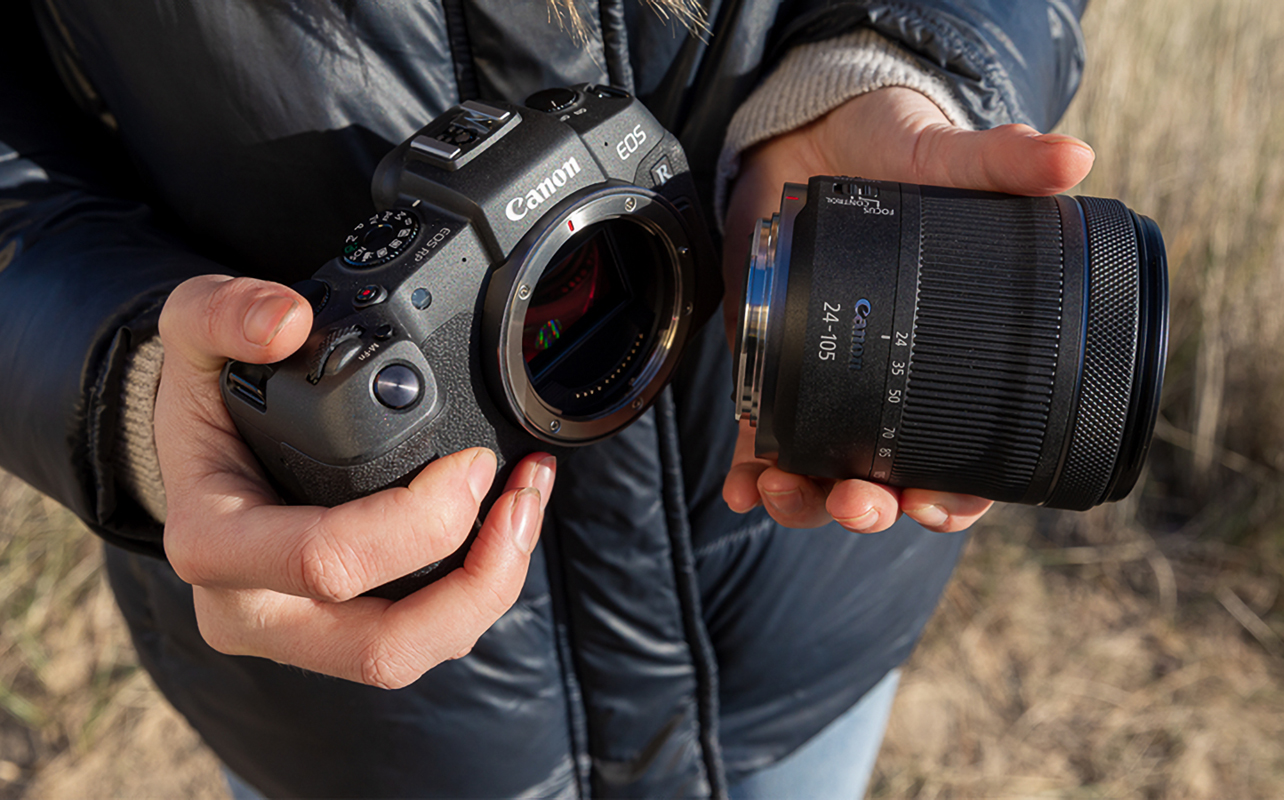
When shopping for lenses, one of the first choices you’ll encounter is between prime and zoom lenses. These terms refer to how the lens handles focal length—essentially, how much it can “zoom” in or out.
What are prime lenses and why are they popular?
Prime lenses have a fixed focal length, meaning they don’t zoom at all. If you choose a 50mm prime, for instance, it will always shoot at that focal length. Unlike smartphones, there is no digital zoom involved here, so you’re limited in that sense. Still, it’s not as limiting as it sounds since prime lenses can produce exceptionally sharp images. They often have wider apertures—like f/1.8 or even f/1.4—allowing more light into the camera and making them perfect for low-light environments and achieving a beautiful blurred background, also known as bokeh. Their simpler internal construction also makes them lighter and more compact, ideal for photographers who want sharp, fast glass without extra weight. You can explore a wide selection of prime lenses at Best Buy Canada to see what’s available for your camera system.
What are zoom lenses and when should you use them?
In contrast, zoom lenses offer a variable focal length, such as 24–70mm or 70–200mm. This flexibility makes them incredibly useful in situations where you can’t easily move closer or farther from your subject, like at a sports event, while travelling, or capturing wildlife. While they tend to be heavier and sometimes not quite as sharp as primes, modern zoom lenses are excellent performers—especially those with constant apertures. They’re great for photographers who value convenience and versatility in a single lens.
Ultimately, choosing between prime and zoom lenses comes down to your shooting style. Portrait photography is more heavily influenced by prime lenses because of the sharpness involved and how easy it is to move to get the right framing. That’s why 35mm, 50mm, and 85mm primes are so popular for capturing people posing. If you need more flexibility and the ability to adapt quickly to different scenes, a zoom lens might be the better fit.
Understanding focal length
There’s a reason why lenses are denominated in millimetres. It’s because focal length is measured by the distance between the “nodal point” of the lens and image sensor. The nodal point is where light converges in a lens, which can differ based on how wide or close the lens can go. The lower the number, the wider the view, whereas higher numbers indicate more optical zoom.
Types of lenses and their use cases
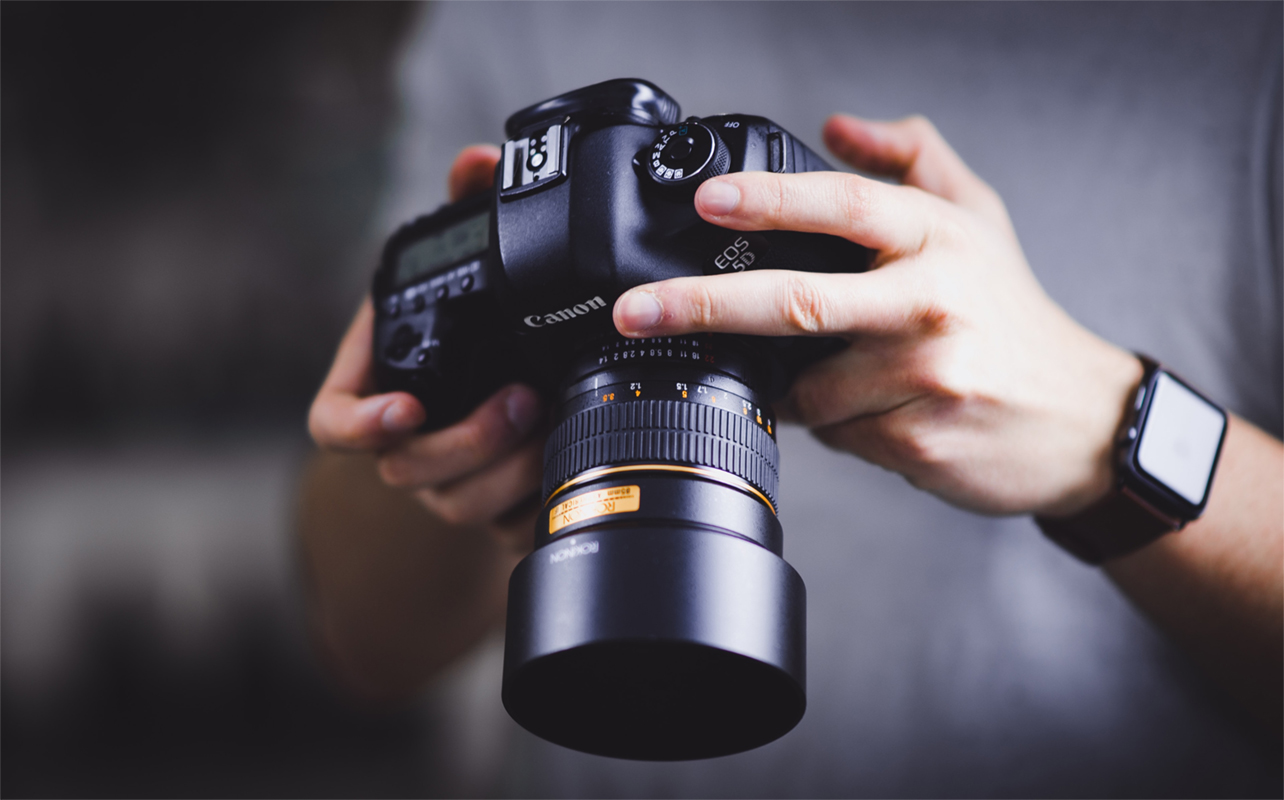
There are a variety of different types of lenses in photography, each designed for specific shooting situations. Understanding how each lens type works and the kinds of images they’re best for will help you choose the right one for your creative goals.
Standard lens (35mm–85mm)
A standard lens typically falls within the range of 35mm to 85mm, offering a natural, true-to-life perspective that mimics how we see the world. These lenses are great for general-purpose photography, as they strike a balance between wide and telephoto lenses. Whether you’re shooting portraits, street photography, or just everyday scenes, a standard lens provides sharp, detailed images without distortion. It’s a versatile choice for photographers who want to capture realistic scenes with minimal fuss. Many standard lenses will fall within this range, though go a little wider on the lower end.
Wide-angle lens (<35mm)
A wide-angle lens has a focal length shorter than 35mm, allowing you to capture more of the scene. These lenses are essential for landscapes, architecture, and interior photography, as they help you fit more into the frame while maintaining sharpness across the entire image. The wider perspective also creates a sense of depth, making objects appear further apart. For example, a 24mm lens would be perfect for capturing vast outdoor scenes or the grandeur of architectural structures. This is partly why that focal length is popular in real estate photography.
Ultra wide and fisheye lenses
When you need to go beyond a typical wide-angle lens, ultra-wide and fisheye lenses provide an even more dramatic view. Fisheye lenses create a circular, distorted effect, often used in artistic or creative shots to produce exaggerated perspectives. This lens type can make close objects appear huge while stretching the background to extreme proportions, making it great for a fun, surreal look. On the other hand, ultra-wide lenses provide an extremely wide field of view but without the severe distortion of a fisheye. These lenses are great for capturing expansive, immersive scenes, such as sweeping cityscapes or vast mountain ranges.
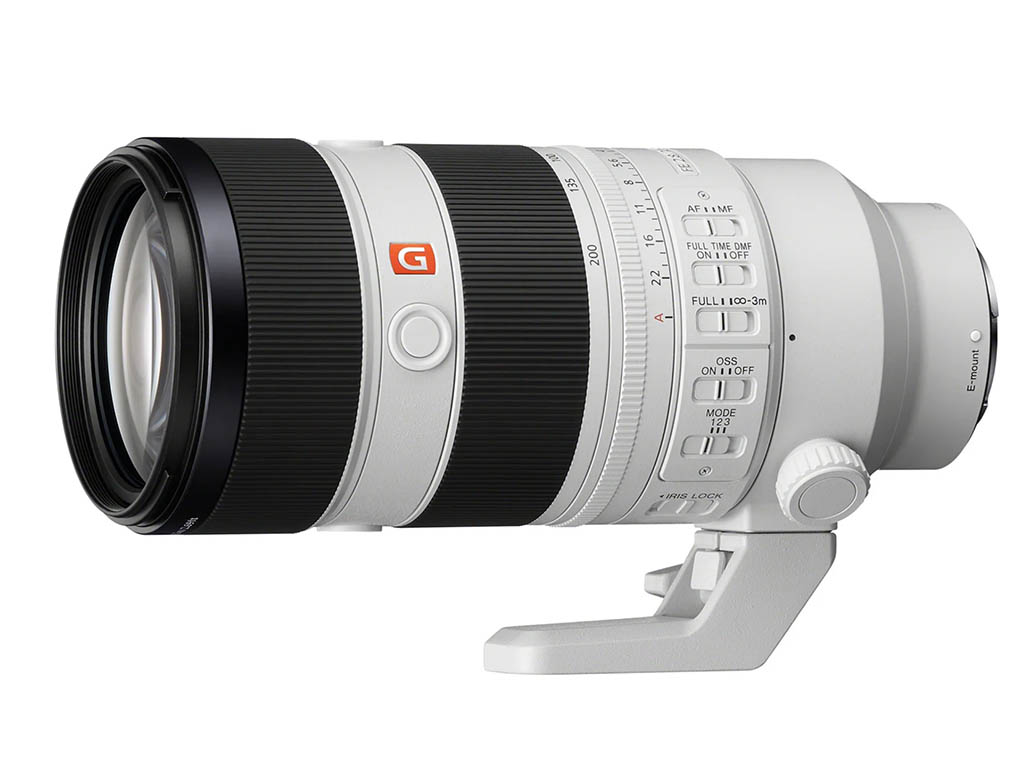
Telephoto lens (85mm–300mm+)
A telephoto lens typically ranges from 85mm to 300mm and beyond, offering the ability to zoom in on distant subjects. This lens type is ideal for wildlife photography, sports, and portraits where you want to keep a safe distance or need to capture subjects that are far away. Telephoto lenses allow you to achieve strong background blur to help your subject stand out from its surroundings. These lenses are also great for isolating details, such as capturing a bird in flight or a runner mid-race. The only thing is the further the focal length, the more susceptible the camera is to shake. That’s why tripods are integral to holding steady for a sharper photo. To learn more about how and when to use this type of lens, check out our beginner’s guide to how and when to use one.
Macro lens
A macro lens is specifically designed for capturing extreme close-ups with incredible detail. This lens allows you to focus on subjects at a very short distance, making it perfect for photographing tiny objects such as flowers, insects, or even the fine details of textures and products. Macro lenses typically have a 1:1 magnification ratio, meaning the image on the camera sensor is the same size as the actual object. You can exploring it further by checking out the macro lenses available at Best Buy Canada.
Portrait lens
While some prime lenses are good for portraits, a portrait lens is typically in the range of 85mm to 135mm. These lenses allow for tight framing while maintaining excellent image quality, with the added benefit of a soft background blur (bokeh) that isolates the subject from the rest of the scene. The longer focal length of these lenses also gives a natural compression to facial features, which is why they’re so popular for capturing people. Whether you’re taking family portraits or professional headshots, a portrait lens ensures your subject is captured in the best light.
Tilt-shift lens
A tilt-shift lens is a specialized tool used in architectural photography, product photography, and even creative landscape shots. This lens allows you to adjust the plane of focus and shift the perspective to eliminate distortion, which is especially useful for photographing tall buildings or other subjects with straight lines. Tilt-shift lenses are also used for creating miniature effects, where real-life scenes appear like tiny models. While they’re not commonly used in everyday photography, they are invaluable for precision and control in more technical photographic work. Note that some photo editing applications can apply this effect to a regular photo, though results may not be consistent.
Choosing the right lens for your photography style
Still wondering which lens is right for you? Here’s a quick table to match common photography genres with the ideal lens type:
| Photography Style | Ideal Lens Type |
|---|---|
| Portraits | 85mm prime, 70–200mm telephoto |
| Landscapes | Wide-angle (16–35mm) |
| Wildlife | Telephoto (300mm+) |
| Macro/Nature | Macro lens (60–105mm) |
| Street Photography | 35mm or 50mm prime |
| Travel | 24–70mm zoom |
| Architecture | Tilt-shift, wide-angle |
When building your lens kit, consider starting with:
- A standard prime (like 50mm f/1.8) for everyday photography
- A wide-angle zoom for landscapes and interiors
- A telephoto for portraits or distant subjects
As you begin to experiment with different types of lenses, don’t forget to check out our guide on how to take great photographs for helpful tips that can elevate your shooting technique.
Lens compatibility and mounts
Before buying a lens, make sure it fits your camera system. Different brands use different lens mounts. Here are a few common ones:
- Canon: EF (DSLR), RF (mirrorless)
- Nikon: F (DSLR), Z (mirrorless)
- Sony: E-mount (APS-C and full-frame)
- Fujifilm: X-mount
- Micro Four Thirds: Panasonic and Olympus
Also, consider whether your camera is full-frame or APS-C (crop sensor). Lenses made for crop sensors will work on crop-sensor bodies only, while full-frame lenses can be used on both (with some limitations). Finally, decide between autofocus and manual focus lenses. Many newer lenses offer fast and silent autofocus, while some older or specialty lenses require manual adjustments—especially useful for macro or video work.
Your lens, your style: What will you shoot next?
Now that you know more about the different types of lenses in photography and their specific uses, it’s time to choose the right one for your creative vision. Each lens type offers unique possibilities, whether you’re capturing sweeping landscapes, intimate portraits, or dramatic close-ups. Remember, your lens is an essential tool that helps define your photographic style, so don’t be afraid to experiment and explore different options.
With the right lens and the right approach, you’ll be well on your way to capturing stunning images every time. And if you’re ready to find your next lens, visit Best Buy Canada for a wide selection of high-quality lenses to suit your needs.
This article was drafted using AI technology and then reviewed, fact-checked, and revised by a member of our editorial team.





